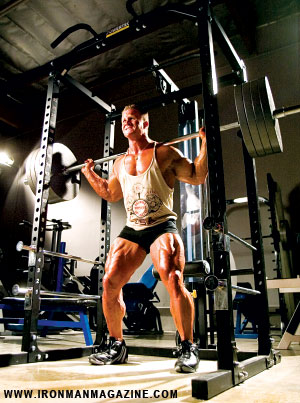 Squats are often called the king of exercises—and for good reason. Squats work the largest muscles in the body, the thighs, and so they not only stimulate serious gains in muscular size and strength but also provide a systemic metabolic stimulation that seems to encourage even upper-body growth.
Squats are often called the king of exercises—and for good reason. Squats work the largest muscles in the body, the thighs, and so they not only stimulate serious gains in muscular size and strength but also provide a systemic metabolic stimulation that seems to encourage even upper-body growth.
In past the barbell squats formed the cornerstone of every bodybuilding champion’s leg program. One notable advocate of intense squatting was the late Reg Park, a three-time Mr. Universe. Reg believed that his heavy squat workouts played a major role in his acquisition of a truly Herculean physique.
Reg favored “breathing squats.” He did high-rep squats—20 or more per set—in which he took several breaths between reps. As soon as he completed one set, Reg would immediately do a set of straight-arm pullovers, also for high reps, in the 15-to-20 range. It was a particularly grueling workout, and Reg credited it with developing his deep rib cage.
I can attest to the validity of Reg’s claims about breathing squats. Unlike those who focus only on upper-body muscles, I began my training with an intense breathing squats/straight-arm pullovers workout similar to Park’s. I’d read about the workout in Iron Man. The article stated that doing breathing squats provided an increased metabolic effect that would stimulate size gains in the entire body. It worked exactly as advertised. I gained about 25 pounds and put a whopping six inches on my chest.
Another early proponent of squats was the great John C. Grimek. The only man to win the Mr. America title twice, in 1940 and ’41, Grimek also won the Mr. USA and Mr. Universe titles, defeating such great bodybuilders of the era as Steve Reeves and Clarence Ross. I once saw Grimek accept an award. At the time he was in his late 70s, and he lamented to the crowd that he could no longer squat with the heavy weights that he used in his younger years. Grimek complained about having to squat with no more than 300 pounds—at the age of 70! Many men that age have trouble getting up out of a chair, much less squatting with 300 pounds.
Over the 39 years that I have trained at Gold’s Gym in Venice, California, I’ve watched heavy-squat techniques evolve. During the Arnold era of the 1970s nearly all the top champs, including Arnold, incorporated some form of squats in their leg-training sessions. Training thighs was particularly onerous for Arnold—building mass there didn’t come easy for him, and his thigh mass was the first to atrophy when he didn’t train. As a result, when he worked his thighs, Arnold always sought a training partner to push him. I know, since I served as Arnold’s leg-training partner on several occasions.
I recall that he would do six sets of every thigh exercise but worked particularly hard on barbell squats. Training thighs was so difficult for Arnold that he trained nothing else at that workout. He often left the gym after an intense thigh workout, got something to eat and then took a nap, returning to the gym later in the day to work his upper body. All the other pro bodybuilders at Gold’s in those years, among them Ken Waller, Mike Katz, Ed Corney, Bill Grant and Pete Caputo, followed Arnold’s lead in doing intense squat workouts. Not doing squats wasn’t a consideration.
Times have changed. While many pros still do squats, others eschew them, using ersatz substitutes such as leg presses and lunges. They cite such reasons as, “Squats build a big ass,” or “Squats widen the waist and produce a bulging belly.” Yet many champs who did extensive squat routines, such as three-time Mr. Olympia Sergio Oliva, three-time Mr. Olympia Frank Zane and ’68 Mr. America Jim Haislop, built massive thighs with heavy squat workouts—yet also had tiny hips without bulging abdomens. You can tell the present champs who still squat by their humongous thigh development; for example, that of eight-time Mr. Olympia Ronnie Coleman and two-time Mr. O Jay Cutler.
Many bodybuilders today avoid squats because they believe that squats induce knee injuries. That notion stems from a 1962 report by a doctor named Klein that’s been disproved many times over the years. If you’re concerned about your knees, you’d be well-advised to be careful with other leg exercises, such as leg extensions and hack squats. Properly done squats impart far less knee strain than they do.
Leg extensions produce an intense shearing effect on the knees that breaks down knee cartilage. That’s particularly true if you flex your lower legs past the 90 degree angle at the start of the exercise or if you use too heavy a poundage. Leg extensions are an isolation exercise, also known as an “open-chain kinetic” exercise. Because of their biomechanics, they place more stress directly on the knee joints. In contrast, when you do squats, the weight is distributed among several strong muscle groups, including the thighs, hips and glutes, rather than being imposed directly on the vulnerable knee joints.
My comments assume that you perform the exercise in good form. That includes not rounding your back; descending in a slow, controlled fashion rather than just dropping down; and not bouncing at the bottom. Some trainers advise looking either straight ahead or up, since looking down tends to encourage your body to bend forward, which is tough on the lower back.
As for depth, that is perhaps the greatest controversy about the squat. Klein and other early squatting dissidents advised squatting only halfway down, to the point where the thighs are parallel to the floor. The idea was that parallel squats preserved the knees. On the other hand, only full squats fully activate the powerful gluteus maximus, or buttocks muscle, which greatly aids squatting power.
Thigh muscles respond better to higher reps. Tom Platz, well-known for his awesome thighs, says that he didn’t achieve the freaky look he became famous for until he began doing high-rep squats—and I do mean high reps. Platz would do sets of 50 or more, even up to 100 reps, using about 315 pounds. He was, however, hardly the first to find that high-rep squatting produced superlative leg development.
I met Dr. Kimon Voyages at the Mid-City gym in New York back in the mid-1960s. The personable Voyages was then 42 years old but still had quite impressive thighs. As a bodybuilding competitor in the 1940s, Kimon had won numerous Best Legs awards and even defeated Steve Reeves in that category at the ’47 Mr. America contest in Chicago, where he placed sixth overall and Reeves was the winner. When I asked Kimon how he built those solid underpinnings, he told me of his penchant for doing very high-rep squats. Scientific studies confirm that high-rep squats are superior for building front-thigh mass.
What about free weights vs. machine squats? Most of those with superior thigh development prefer free-weight barbell squats. On the other hand, if for some reason your form is continually bad—for example, you’re leaning too far forward—doing squats on a machine may force you to stay in the proper exercise plane and thus preserve your lower back.
Many trainees feel that they have more control when they use a machine, which puts less stress on the knees. I used to use a special squat bar that combined the best of free weights and machine squats. It forced you to use good form yet also permitted you to use heavy weights. I stopped doing the exercise only when the squat bar was removed from the gym for unknown reasons. I now do a type of machine squat that just isn’t the same as a barbell squat or squat bar, and my thigh development has regressed significantly as a result, despite the fact that I also do moderate-weight leg presses and leg extensions.
Frank Zane used a special squat apparatus that he designed that makes it easier to maintain perfect form throughout your set. Zane feels that it contributed greatly to his thigh development. Another bodybuilder from that era, Dave Draper, squats using a special device of his own design that lies across his back and helps support the bar, thus favoring better squat form and increased exercise focus.
Another typical method of doing squats involves changes in foot position. The dogma states that keeping the feet in a narrow stance favors the outer thighs, thus promoting a desirable thigh “sweep.” A wider stance is supposed to place the focus on the inner thighs, training such muscles as the adductors and sartorius. Studies show that doing wider-stance squats does produce more adductor activity. Doing narrow-stance squats, however, does not work any of the thigh muscles more effectively than if you use a normal foot stance of about shoulder width.
While some suggest that doing full squats involves the hamstrings more, meaning the muscles on the backs of the thighs, the truth is that squats provide minimal hamstring involvement. For full hamstring development you need to do at least two basic movements: leg curls and stiff-legged deadlifts. That way you work the hams at both the knee and hip areas.
Steve Reeves favored front squats. The screen Hercules believed that doing heavy regular squats would increase his hip and glute size, and since he was blessed with small hips and glutes, he wanted to keep them that way. His basic thigh workout consisted of front squats, hack squats and leg curls. He did it three times a week as part of a whole-body routine. Knowing that the thighs are the largest muscles in the body and required more energy to be trained effectively, Reeves trained them first.
Front squats, as the name implies, are performed with the bar held in front, usually resting on your front delts and upper chest. One advantage of them is that they make it more difficult to lean forward. That has the duel effect of lessening the possibility of lower-back strain and placing less stress on the hips and glutes.
A major drawback of front squats is that there’s a tendency for the bar to press into your throat, which can be uncomfortable. Another problem is the way the bar rests in your hands, often bending back the fingers excessively. That can also be painful. One possible solution is to attach lifting straps to the bar and hold the straps rather than bending your fingers under the bar. Reeves did the exercise with his arms crossed over his chest, holding the bar in his crossed arms.
Hack squats are another useful variation, although they are not a replacement for barbell squats. On the other hand, famed bodybuilding trainer Vince Gironda was a strong proponent of hack squats done on a machine and even refused to allow squat racks in his famous Studio City, California, gym. Vince suggested that doing machine hack squats with varying body alignments would produce full thigh development minus the big ass and hips that he said would result from heavy barbell squats. I recall once sitting in the front of Vince’s Gym with Vince as we observed a bodybuilder across the gym doing lunges, which Vince called another “ass builder.” Vince watched the guy for a few minutes, a look of utter disgust on his face, then turned to me and said, “Look at the guy. He has an ass so big, you could hide a small child under it in the rain and the kid wouldn’t get wet, and here he’s doing another ass-building exercise!”
[*Get the latest e-book collection of Vince’s methods, quotes, workouts and advice Vince Gironda: Legend & Myth by Alan Palmieri, one of Vince’s students. Read the Iron Man magazine review here.]
In one hack variation that Vince favored, you move your hips forward as you come up out of the low position. He said that would train both the lower and upper thighs, whereas hack squats normally focus on the lower part of the front-thigh muscles.
Bodybuilders often use too much weight on hack squats. The angle of the typical hack machine places a lot of stress on the knee joints, just as leg extensions do, since the large glute and hip muscles are not heavily involved in the movement (which is why Vince liked it). Piling on the weight and doing the exercise with a narrow foot position is guaranteed to result in bad knees eventually. I know, because I did hacks that way for more than 20 years. I wound up shearing away most of the cartilage in my knees, leaving me with arthritis today. Don’t make the same mistake.
I can also attest that when done properly, squats are still the king of exercises, and there is simply no substitute if you’re seeking to build massive and powerful legs. IM
Squat Problem Solved
There are plenty of us who would love to squat really heavy and certainly have the hip and thigh power to do so but also have lower-back injuries that make it impossible. If your legs aren’t as huge as you’d like them to be, that can be a downer, but the great thing about weight training is that there are always ways around such issues. You can indeed make 200 pounds feel like 500 and make it stimulate just as much muscle growth. Slowing down your reps, pausing at the bottom and using higher-rep ranges are a few neat tricks.
I recently picked up another one from IFBB pro King Kamali, who happens to own a pair of monster tree trunks. The main part that intrigued me about his leg workout was that he supersetted heavy Smith-machine squats with lighter barbell squats for 15 reps each. That appealed to me because going heavy on the Smith machine keeps the lower back relatively fresh, as it’s not needed to balance the weight the way it is when you use a barbell. Then, when you move directly to free-weight squats, the quads are temporarily weaker, relatively speaking, than the spinal erector muscles of the lower back and can be blasted into oblivion.
As I have a chiropractor’s rap sheet longer than my arm, I thought that might be just the ticket. I warmed up with one 45-pound plate on each side of the Smith machine for 12 reps, then did the same on the bar for 12. Next, I added a second 45 to the Smith and got 15 reps. Luckily, the Smith machine was right next to the squat rack, where I did a mere 135 for 15. I was starting to get one heck of a pump going in my quads. I added a quarter to the Smith, which would be 275 if it were a bar, and did 15 more reps. After a quick two steps over to the barbell, where I kept the weight at 135, I got another 15. I had planned on going at least to 185 but now saw that would be overly ambitious. The 135 sure felt a lot heavier.
The beauty of it was, it really wasn’t. My lower back was not being exposed to potentially traumatic loads. For my final set I needed my wife, Janet, to help me get the last couple of reps with the 275 and also with the 135 on the bar. I felt like I’d been run over by a truck!
One really cool thing about this superset is that if your lower back is perfectly healthy, you can simply swap the order and do the barbell squats first. Those will do a number on your lower back, but you’ll still be able to continue on to Smith-machine squats to drive your thighs into a zone of pain and growth the likes of which you’ve never experienced. You can finish quads off with a couple sets of leg extensions and leg presses if you still have it in you, but you may not even need them. If your quads haven’t had a great pump in some time, or if you’re looking for a way to hammer them without using a ton of weight, give this routine a try.
—Ron HarrisEditor’s note: Ron Harris is the author of Real Bodybuilding, available at www.RonHarrisMuscle.com.












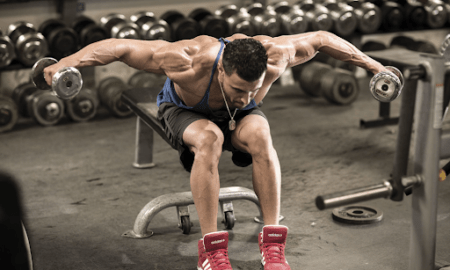
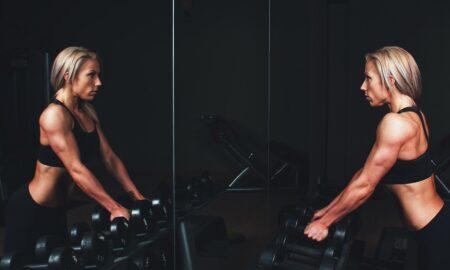



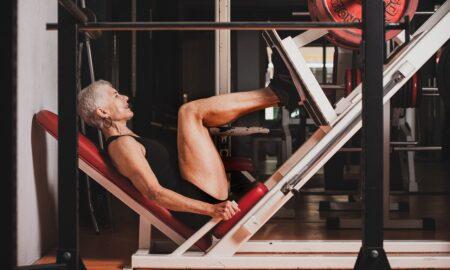

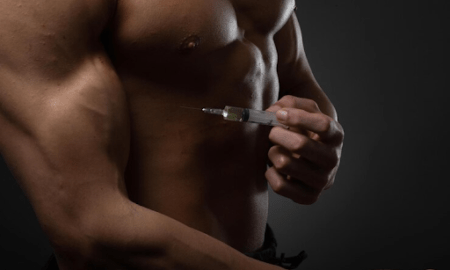
You must be logged in to post a comment Login